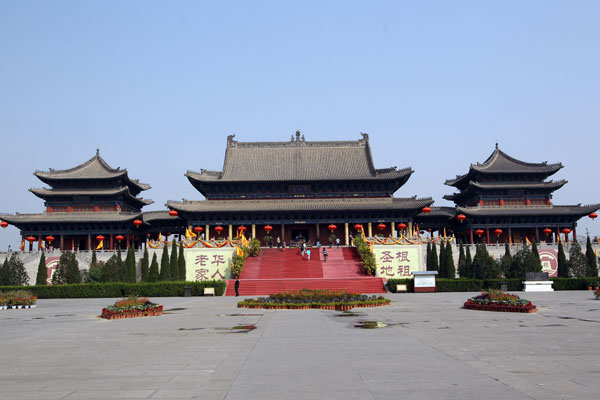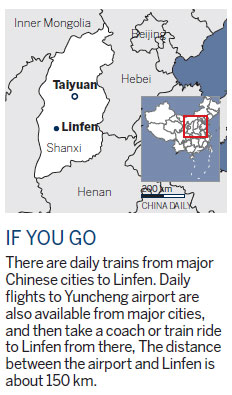 |
|
Ancestor hall at the Giant Locust Tree. Photos by Zhang Wei / China Daily |
Linfen offers an array of sites for both nature and history buffs.

Being from China, I was a little ashamed that I didn't know Linfen was one of the birthplaces of the Chinese nation.
I recently took a three-day trip to Linfen. The city, located in southwestern Shanxi province, is about a five-hour high-speed train ride from Beijing. I arrived late in the afternoon and visited the Fen River Park, which was built along Fen River, the mother river of Shanxi.
What struck me most was the size of the park. It's bigger than most of the ones I've seen in Beijing. The park features architecture from the Ming (1368-1644) and Qing (1644-1911) dynasties and great views along the river. There were no signs of the grave pollution that made Linfen the most uninhabitable place in the world in 2006.
I stayed at the Swan Hotel near the park. The hotel offers a nice environment and food, but poor Internet service. After getting my strength back, I went to see the Hukou Waterfall the next day.
It was a two-hour drive from the hotel, and I could hear the sound of the waterfall as the bus approached the entrance of the scenic spot. Unlike many other scenic spots where you have to trek or climb a long way before reaching the main attraction, the Hukou Waterfall was close to the entrance, just about 200 meters away.
The whole place is a big valley lined with two stretches of stone mountains. The roaring yellow water from the waterfall cascaded into a deep canyon, which separates Shanxi and Shaanxi. A rainbow formed at the canyon, and everything sparkled under the sun.